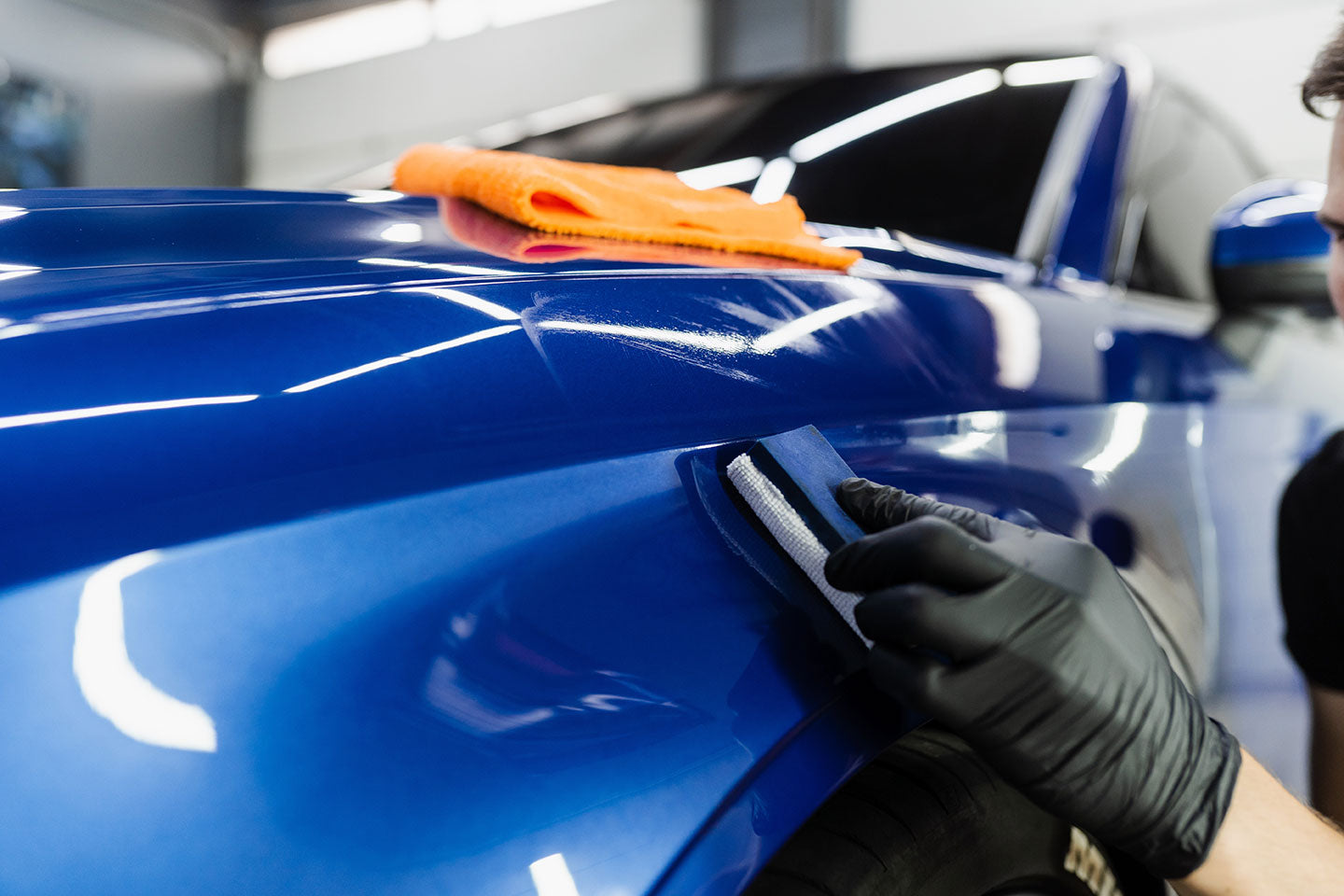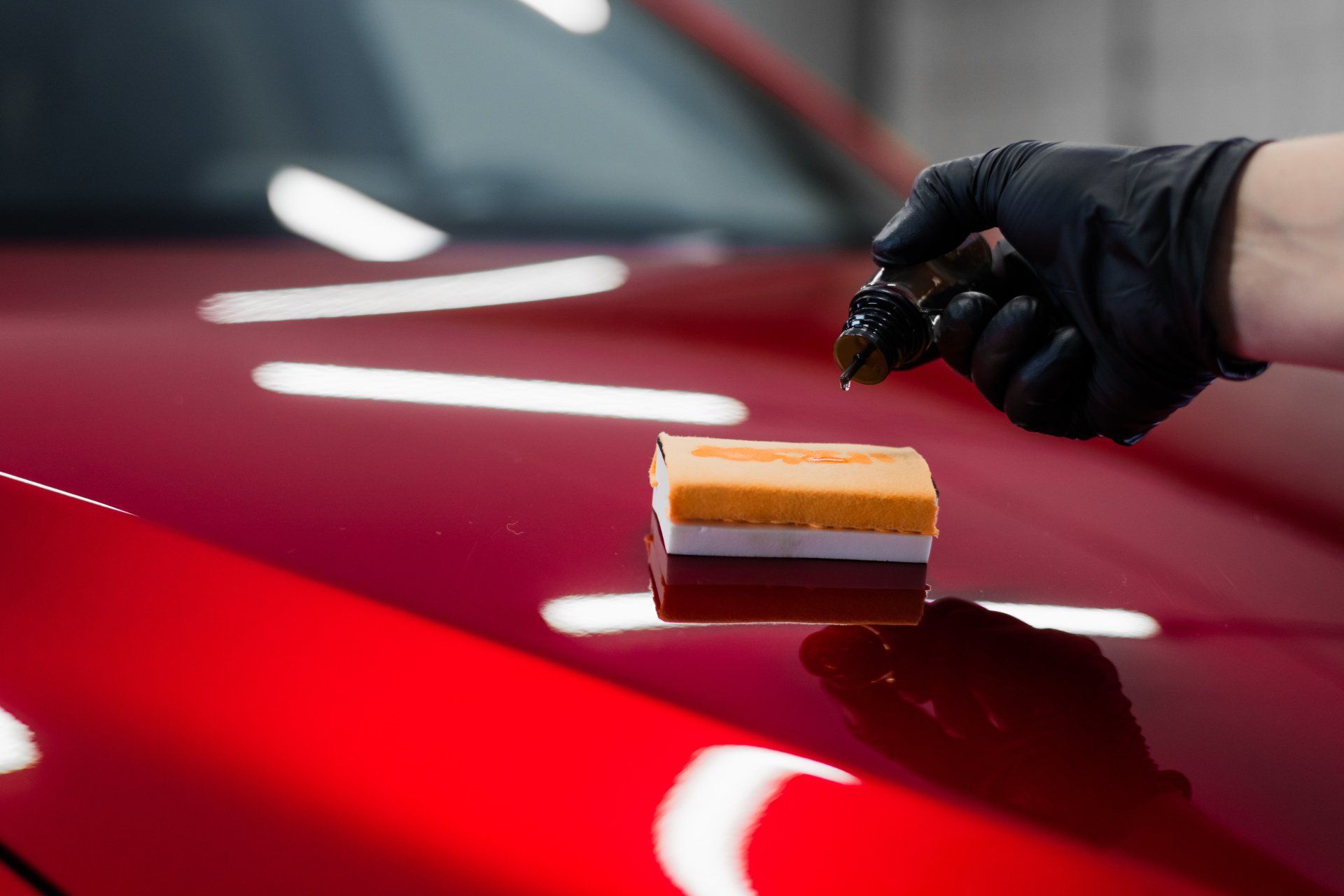Check Out Exactly How Ceramic Finish Can Change Your Automobile's Surface and Performance
Ceramic finish stands for a substantial improvement in vehicle surface area security, providing a durable, hydrophobic barrier that boosts both look and long life. This cutting-edge option not only protects your vehicle from ecological threats yet likewise streamlines upkeep by pushing back water and impurities. The application process and its long-lasting benefits raise crucial considerations for car owners seeking to maintain their financial investment. As we discover the intricacies of ceramic layer, the ramifications for your car's efficiency and visual appeal come to be increasingly engaging. What elements should you be conscious of prior to making this decision?
What Is Ceramic Finishing?

The application process entails extensive surface area preparation, including cleaning, polishing, and decontaminating the paint to make certain optimal attachment. Once the surface area is ready, the ceramic finish is carefully used, permitting appropriate healing and bonding. This procedure not just improves the lorry's aesthetic charm yet additionally provides an added layer of protection versus ecological pollutants such as dust, UV rays, and chemicals.
Ceramic finishes are readily available in various formulations, dealing with various demands and choices. Their flexibility makes them appropriate for a vast array of cars, from daily autos to premium deluxe models. Consequently, ceramic covering has come to be increasingly popular among vehicle lovers and daily motorists alike, looking for to preserve their automobile's look and stability gradually.
Secret Advantages of Ceramic Layer
The application of ceramic layer supplies many advantages that add to automobile durability and aesthetic appeal. Ceramic finishings develop a hydrophobic surface area that fends off water, dust, and gunk, making it considerably easier to clean and maintain the car's outside.

Another remarkable benefit is the enhanced gloss and deepness that ceramic finishings convey to the automobile's finish, developing a sensational visual appeal. The sturdiness of ceramic coverings is unmatched when contrasted to traditional waxes and sealants, often enduring numerous years with proper upkeep. Generally, the key advantages of ceramic coating make it an indispensable option for automobile proprietors seeking ideal defense and visual enhancement.
Just How Ceramic Covering Works
At its core, ceramic layer functions by producing a chemical bond in between the layer and the vehicle's paint surface. This bond is developed through a process known as sol-gel technology, where fluid polymers are related to the surface area and subsequently cure to create a resilient, protective layer. The result is a semi-permanent covering that boosts the lorry's appearance while providing a strong defense against ecological pollutants.
The ceramic finishing is made up of silica dioxide (SiO2) and often titanium dioxide (TiO2), which are vital parts that give exceptional firmness and hydrophobic buildings - Ceramic Coating. When healed, the finish develops a dense, glass-like layer that repels water and dust, making it substantially much easier to maintain the lorry's tidiness. Additionally, this obstacle secures versus UV rays, oxidation, and chemical spots, ultimately lengthening the life of the paint
One more critical facet of exactly how ceramic coating jobs is its ability to load in microscopic blemishes in the car's paint surface area. This smoothing impact boosts the general gloss and shine, using a visually attractive coating that lasts longer than standard waxes or sealers. The result is a lorry that not only looks much better but is also much better protected against the components.
Application Process Described
Recognizing the application process of ceramic finishing is crucial for attaining optimum outcomes. A proper surface is important, as any type of imperfections can compromise the finishing's efficiency and durability.
When the surface area is tidy and completely dry, a paint correction may be performed to deal with any type of swirl marks or you can find out more scrapes. This action is critical, as the ceramic layer will certainly secure in the surface area's problem. After improvement, the lorry is cleaned down with an isopropyl alcohol remedy to eliminate any remaining oils or residues.
Following, the ceramic coating is applied in tiny areas, making use of either a foam applicator or a microfiber towel. Ceramic Coating. The finish is spread out evenly and allowed to bond with the surface for a defined treating time, which can differ based on the item made use of. Complying with application, the automobile is usually left in a controlled atmosphere to treat fully. This thorough procedure makes sure that the ceramic finishing adheres effectively, supplying the preferred protection and boosting the lorry's look.
Upkeep Tips for Durability
Proper upkeep of your vehicle's ceramic layer is vital for optimizing its longevity and efficiency. additional reading Avoid automatic auto washes with extreme brushes, as they can endanger the covering's stability.

In addition, take into consideration routine assessments for any type of indications of wear or damages. Attending to concerns quickly can avoid more considerable fixings down the line. Prevent exposing the car to severe conditions, such as extended sunlight or extreme chemicals, which can degrade the coating.
Finally, bear in mind that while ceramic coatings offer substantial protection, they are not entirely invulnerable. Ceramic Coating. Routine upkeep and interest to detail will ensure your car preserves its aesthetic and performance benefits for many years to find
Final Thought
In summary, ceramic finishing stands for a significant development in car surface protection and performance you can find out more enhancement. Its capacity to develop a sturdy, hydrophobic layer promotes the repulsion of water, dust, and crud while giving a shiny surface that raises aesthetic charm. The lasting nature of ceramic finishings not only safeguards against UV rays and environmental pollutants but also minimizes upkeep initiatives, eventually prolonging the lifespan of a vehicle's paintwork and guaranteeing it stays in optimal problem for many years.